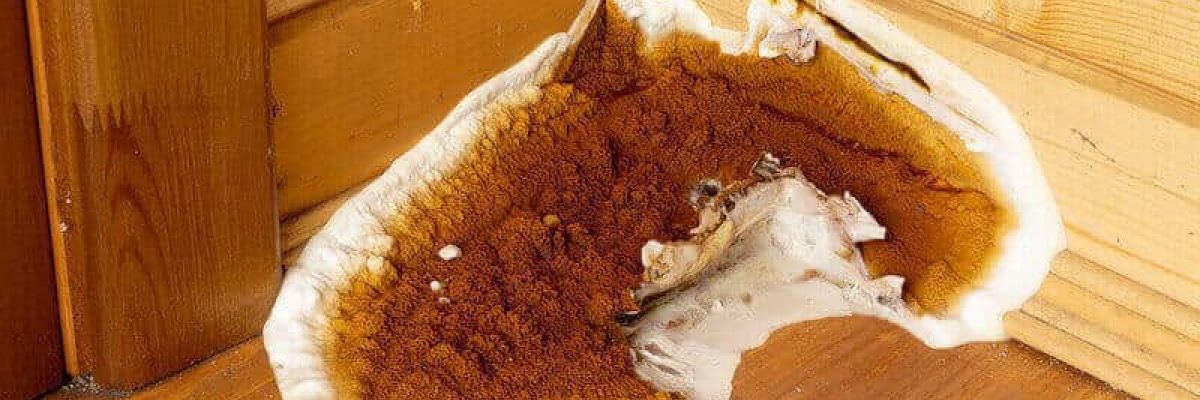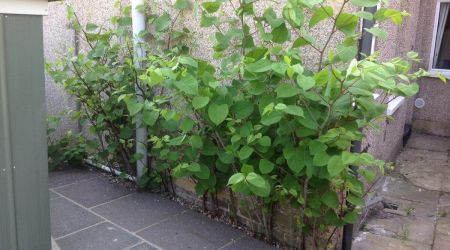Dry Rot, Wet Rot & Woodworm

A common issue found on valuation reports is rotten wood. That can be either wet rot or dry rot. In addition, an infestation can be an issue that damages wood from woodworm. I find the impact varies greatly depending on what has been found. I will look at a few here.
Wet Rot
Essentially wet rot is caused by high moisture levels in timber. The consistent high moisture levels cause timber to decay naturally but at a significantly fast rate than it would normally.
Wet rot is caused by a Fungus, it is attracted to timber that is damp. Once it forms on the timber it effectively feeds off it, destroying the timber in the process.
Without a source of moisture wet rot will not spread, so it only travels as far as the source of water then stops. So the extent of any damage depends on the leak.
The most common issue that causes wet rot is a leak. That could be a leak in a roof, perhaps faulty gutters, groundwater seeping in through a wall or even faulty plumbing causing water to drop onto a wooden joist can cause it.
The 1st step in treating wet rot is simply to stop the source of the moisture. To fix the leak!
Thereafter any rotten timber should be replaced/repaired.
Something that sounds easier than it is in some cases. Replacing certain timbers can be an extensive process. A couple of floor joists for example may require a bathroom to be stripped out so they can be replaced.
Dry Rot
Dry rot is also a fungus, a far nastier one. It is very aggressive and will spread across a home unnoticed until it is too late. It can creep behind plaster, through cavity walls and find new timber to destroy as it goes.
Timber is a food source that gives it the ability to grow and spread, finding new sources encourages it more and if not found early can be devastating to the property.
The fungal spores that cause dry rot are quite common, you may have them in your home now. But in order to be a problem, they require timber, elevated humidity between 20-30% and poor ventilation to activate and start doing damage.
It is recommended that once dry rot is found you should strip plastered walls and other coverings until the end of the fungus is found then strip another metre to be sure. All of the affected areas will require chemical treatment to kill the fungus.
The sooner it is caught the better. I have seen dry rot consume all the hidden timbers in a house to the extent it needed a complete internal rebuild. That is how bad it can get if left long enough.
Woodworm
Woodworm is the name given to the wood-boring larvae often from the furniture beetle although there are other beetles that cause it.
Essentially what happens is that the beetle lays its eggs on the timber. When the eggs hatch the larvae then burrow into the timber which is a food source for them. They burrow through the wood causing tunnels in the timber. Eventually, the larvae will become an adult and fly out through the hole originally made.
As seen in the image above, the holes in the timber are noticeable but very small. The existence of holes in the timber indicates there has been an infestation but it does not mean it is still there or ongoing.
Usually, the process is as follows:
- Laying eggs on the timber
- Hatching of eggs
- Burrowing of the larvae
- Flight of the adult beetle
The process at stage 3 above is a long one, the larvae can stay in the timber borrowing for up to 5 years.
The process will continue as long as there are adults laying eggs. Woodworms do also require the right conditions. Those are primarily high moisture levels.
Commonly you can treat it with chemicals sprayed onto the timber. This will prevent any fresh larvae from burrowing into the timber and destroy any already in the timber as they try and emerge.
Depending on the time active and the number of larvae the damage may not be significant but you can generally tell where they have caused a lot of damage as the timber will start to crumble in a powder and will need to be replaced.
Valuer recommendations
If a valuer is able to identify issues of rotting wood or infestation further action will be required. The valuer may only suspect there is an issue from the smell often caused by timber decay.
It is likely to be a condition of a mortgage that a specialist contractor is appointed and any work identified by them will need to be carried out within a specific timeframe. Some lenders may insist that the specialist report is obtained prior to lending to establish the extent of any work required.
It may also be the case that retention is recommended meaning a percentage or fixed amount of the mortgage will be held back to force you to take action before being given the amount retained.
If you want to find out more from a valuer perspective, have a look here.
Lee Wisener, CeMAP, CeRER, CeFAP
Having worked in the mortgage industry for over 20 years I have always wanted to build a website dedicated to the subject. Also being a geek when it comes to the internet all I needed was time and I could both build the site from scratch and fill it with content. This is it!

<< Newer Post
Damage From TreesOlder Post >>
Japanese Knotweed